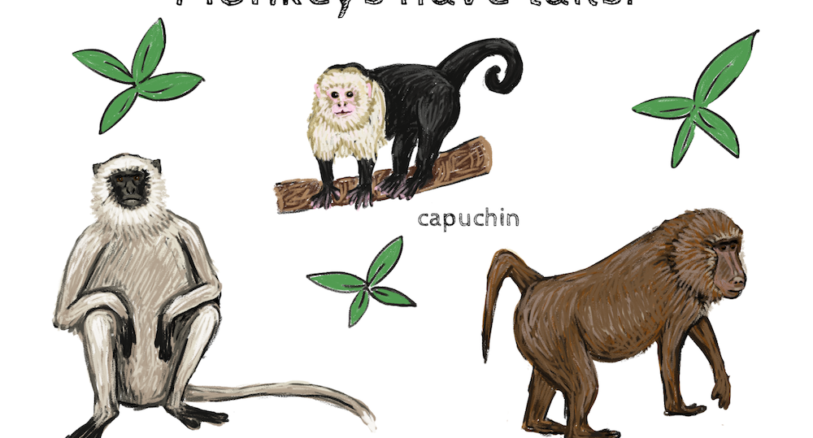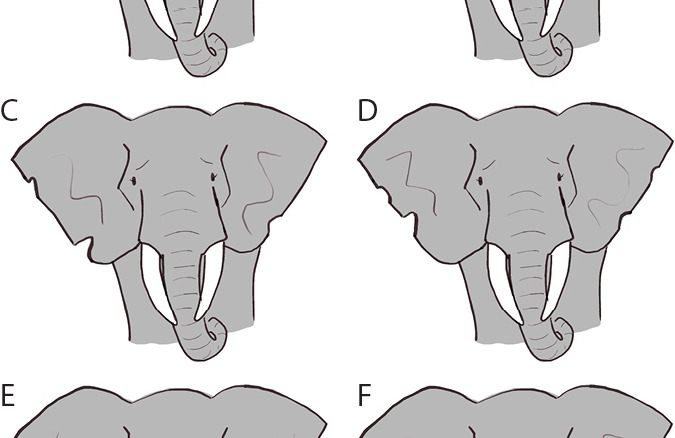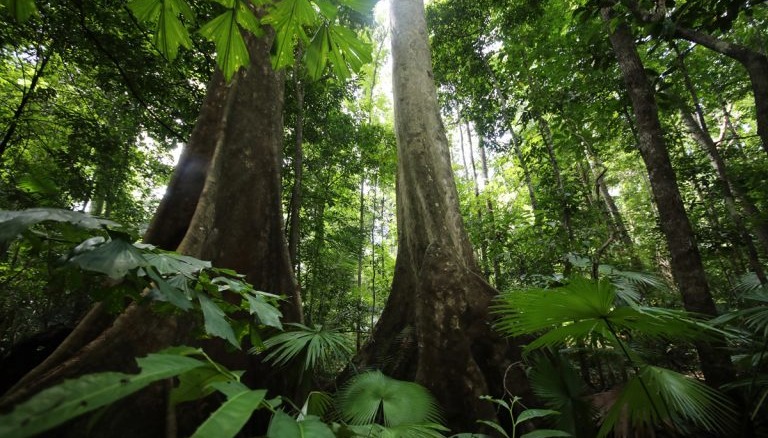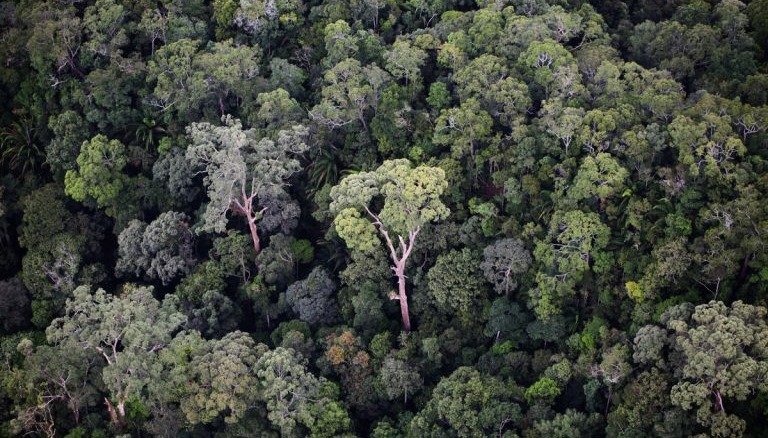Note: This is Activity 3 of the water cycle lesson for grades 3–5.
Purpose: To bring awareness about how rainforests play a critical role in maintaining water cycles globally.
Procedure: Pairing students together and having each pair choose which question they would like to teach the class is a fun way to have students learn with each other. Note: Pairing the 3rd and 4th graders with each other and the 5th graders with each other works very well. Once the students explain how they arrived at their answers (using the white-board and dry-erase markers), the class decides if they deserve a point. All pairs will most likely earn a point. The teacher can step in and assist pairs that need help (so that every pair earns a point).
Questions:
1. Did you know that approximately 97% of Earth’s water is saltwater?
• If 97% of Earth’s water is saltwater, then only _____ is fresh water.
2. Did you know that in some rainforests, it rains more than 1 inch every day of the year!
• If it rains more than 1 inch every day in some rainforests and there are 365 days in a year, then it can rain _____ inches in some rainforests each year.
3. Did you know in the Amazon, 50-80 percent of moisture remains in the ecosystem’s water cycle?
• If deforestation continues, there will be ____ water in the water cycle.
4. Did you know that rainforests have some of the largest rivers in the world: Amazon, Mekong, Orinoco, and Congo.
• If the Amazon River has 1,100 tributaries (smaller rivers and streams) 17 of which are over 1,000 miles long, then the Amazon is a ______ source of freshwater!
5. Did you know that during the high water season, the Amazon River discharges 17 billion metric tons of water into the Atlantic Ocean daily? That’s enough water to supply New York City’s freshwater needs for nine years?
• If weather patterns change due to the effects of deforestation (less atmospheric moisture and less rain), then this could have a ______ effect on Earth’s water cycles.
6. Did you know that across the entire Amazon, trees produce 20 billion tons of water per day, or the equivalent of more than one-fifth of all the freshwater that flows into Earth’s oceans!
• If one-fifth (20%) of all the freshwater that flows into Earth’s oceans comes from trees in the Amazon, then deforestation can _________ the amount of freshwater in Earth’s oceans.
7. Did you know moisture generated by rainforests travels around the world? For example, scientists have discovered that rainfall in the Midwestern region of the USA is affected by forests in the Congo.
• If deforestation continues in the Congo, then the Midwest is more susceptible to _____________. This can severely affect farmer’s crops and the survival of rancher’s livestock (farm animals).
8. Did you know that forests in Southeast Asia influence rain patterns in southeastern Europe and China?
• If deforestation in Southeast Asia continues due to the replacement of rainforests with palm oil plantations, then regions in Europe and China face a higher likelihood of ____ rain.
9. Did you know that moisture generated in the Amazon ends up falling (precipitating) as rain as far away as Texas?
• If deforestation continues in the Amazon, then Texas is more prone to drought. This can increase the likelihood of ______.
10. Did you know that the leading cause of deforestation in the Brazilian Amazon is cattle ranching?
• If there were less demand for eating beef, then ____ rainforests would be deforested.
11. Did you know that it takes 4,000 – 18,000 gallons to ‘grow’ one hamburger compared to 13 gallons to grow an orange?
• If you decided not to eat two hamburgers per week, then you could save ____________________ gallons of water each week. That’s a lot of water!
12. Did you know it takes 400 gallons to produce 1 egg?
• If it takes 400 gallons to produce 1 egg, then it takes _____ gallons to produce a dozen (12 eggs).
13. Did you know it takes 3 gallons to make 1 sheet of paper?
• If one ream of paper contains 425 sheets, then ____ gallons of water were used to make one ream of paper.
14. Did you know it takes 700 gallons to make one cotton shirt?
• If it takes that much water to make one cotton shirt, then you can _____ water by wearing your older sibling’s out-grown shirts.
15. Did you know that one leaking faucet that drips 1 drop of water per second (60 drops in 1 minute), wastes 2,082 gallons of water each year?
• If people knew how much water was wasted from a leaking faucet, then they would get it ______!
Answers:
1. If 97% of Earth’s water is saltwater, then only 3 % is fresh water. Because the amount of freshwater is so small, every precaution must be taken to ensure that it does not become polluted. (Activity 7: Take Action offers some suggestions. Please add your own suggestions as well.)
2. If it rains more than 1 inch every day in some rainforests and there are 365 days in a year, then it can rain 365 + inches in some rainforests each year.
3. If deforestation continues, there will be less water in the water cycle.
4. If the Amazon River has 1,100 tributaries (smaller rivers and streams) 17 of which are over 1,000 miles long, then the Amazon is a huge source of freshwater!
5. If weather patterns change due to the effects of deforestation (less atmospheric moisture and less rain), then this could have a global effect on Earth’s water cycles.
6. If one-fifth (20%) of all the freshwater that flows into Earth’s oceans comes from trees in the Amazon, then deforestation can decrease the amount of freshwater in Earth’s oceans.
7. If deforestation continues in the Congo, then the Midwest is more susceptible to drought. This can severely affect farmer’s crops and the survival of rancher’s livestock (animals).
8. If deforestation in Southeast Asia continues due to the replacement of rainforests with palm oil plantations, then regions in Europe and China face a higher likelihood of less rain.
9. If deforestation continues in the Amazon, then Texas is more prone to drought. This can increase the likelihood of fire.
10. If there were less demand for eating beef, then fewer rainforests would be deforested.
11. If you decided not to eat two hamburgers per week, then you could save 8,000-36,000 gallons of water each week. That’s a lot of water!
12. If it takes 400 gallons to produce 1 egg, then it takes 4,800 gallons to produce a dozen (12 eggs).
13. If one ream of paper contains 425 sheets, then 1,275 gallons of water were used to make one ream of paper.
Note: Recycled paper and Sustainable Forestry Initiative certified paper reduces deforestation, thus saving trees which add water (transpiration) into Earth’s atmosphere! Check out the Take Action Activity 5 for suggestions on what your school and household can do to make a positive difference.
14. If it takes that much water to make one cotton shirt, then you can save water by wearing your older sibling’s out-grown shirts.
15. If people knew how much water was wasted from a leaking faucet, then they would get it fixed! Not only would this conserve water, but it would save a household or school a lot of money.
References:
http://ga.water.usgs.gov/edu/watercycle.html (see link below for current USGS content)





